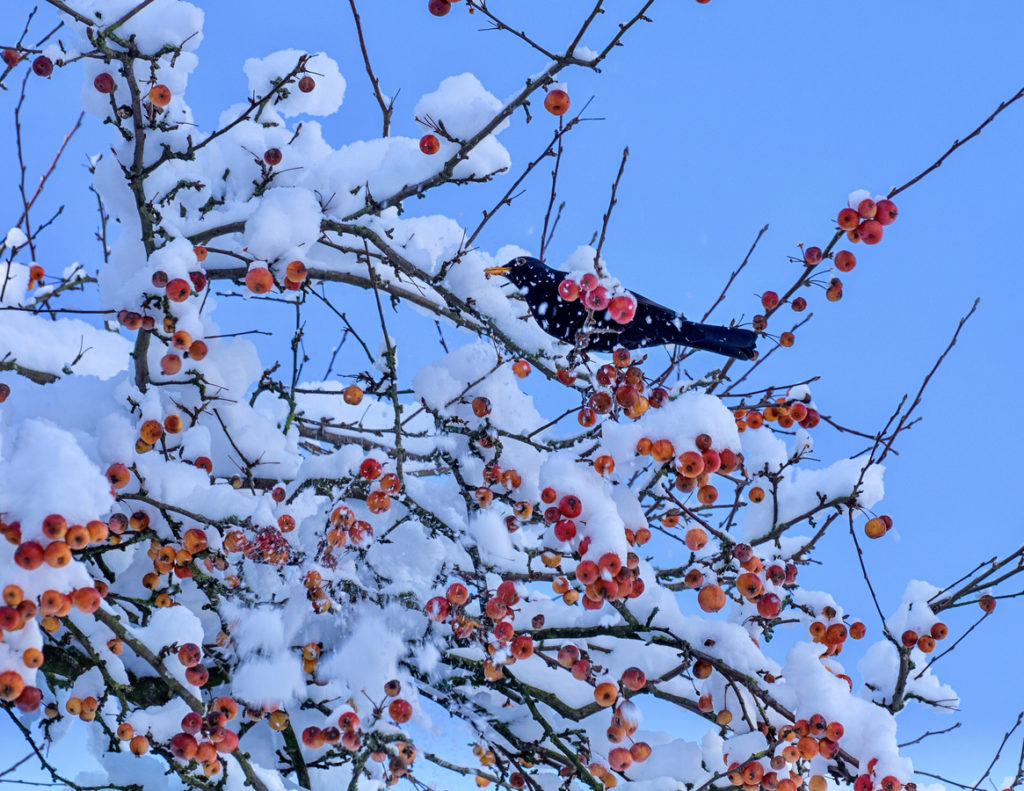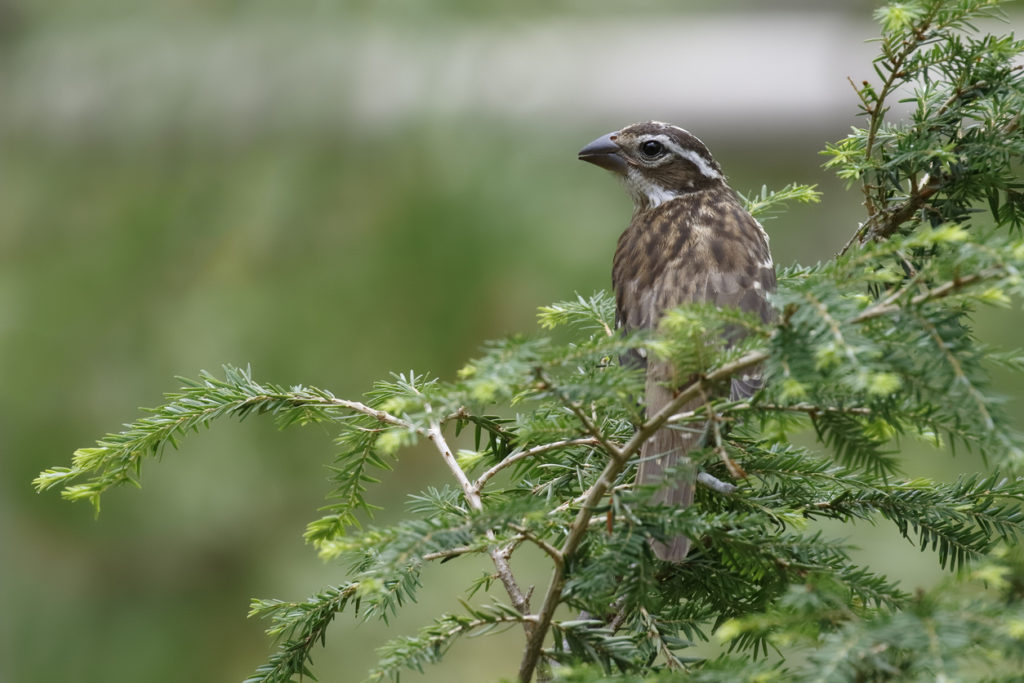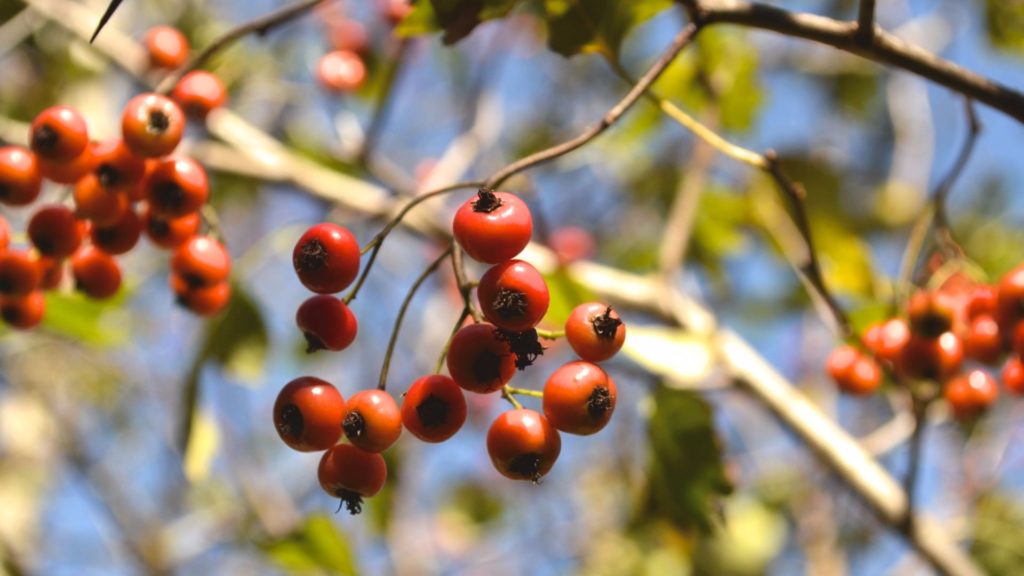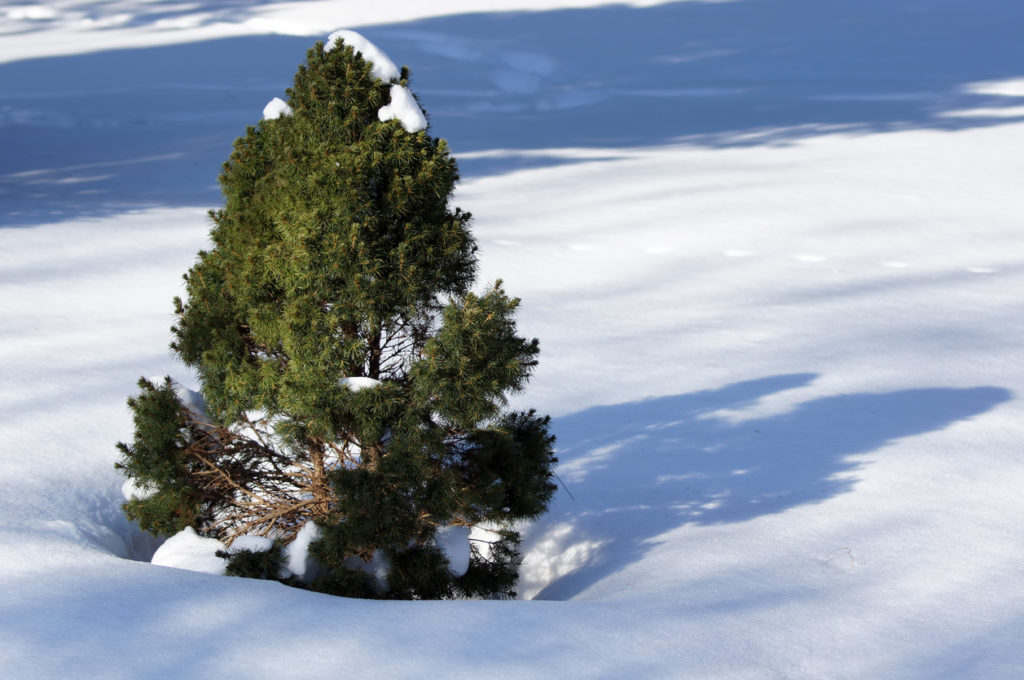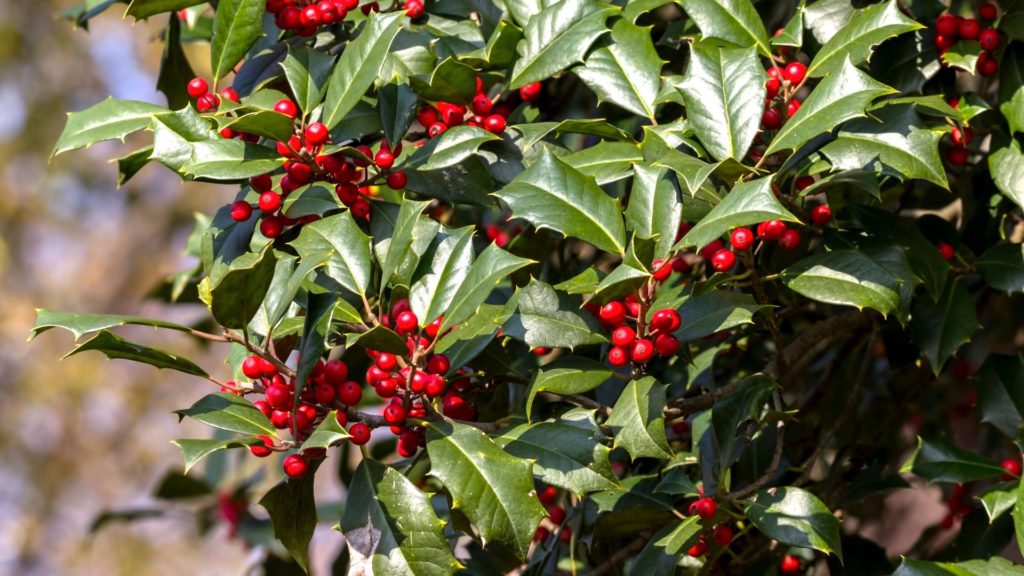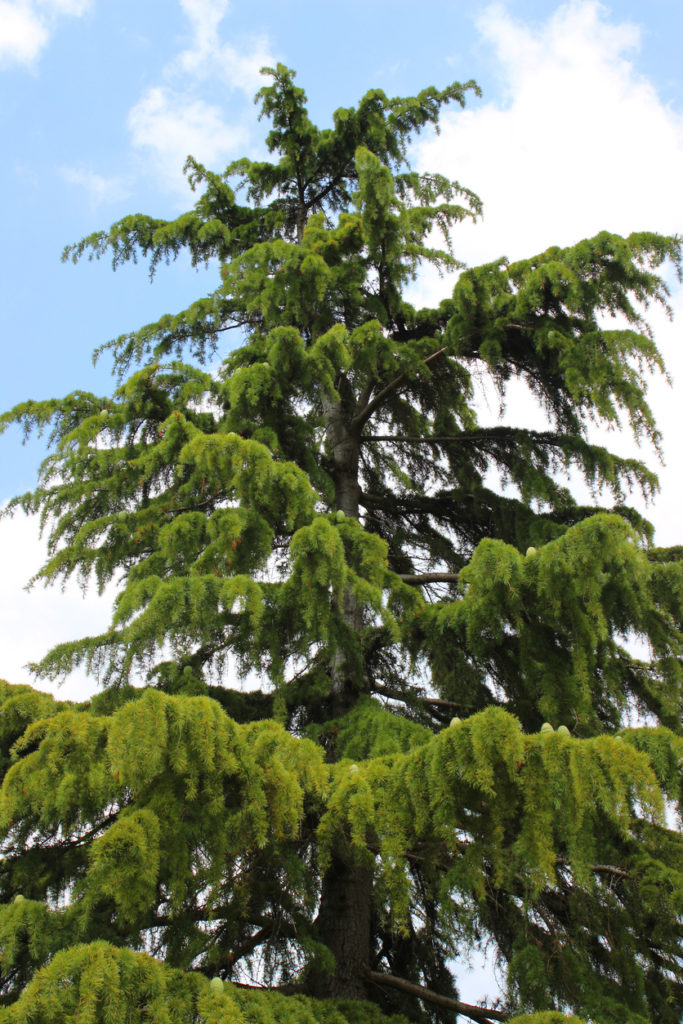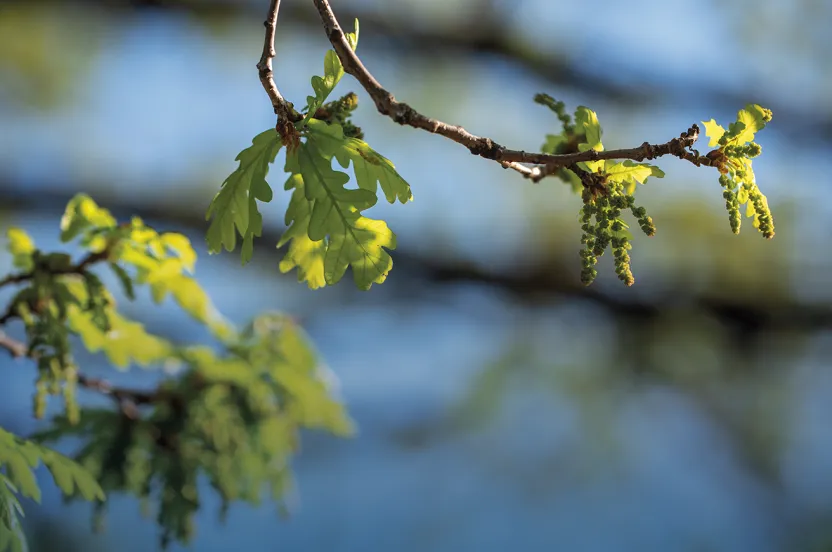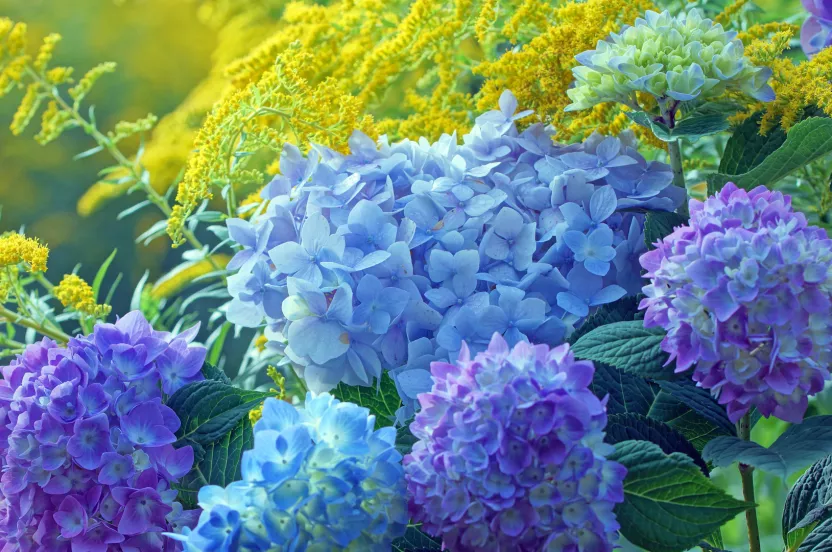9 Trees That Will Attract Winter Wildlife
A common thread that runs through the fabric of America is our love for wildlife. Whether it is a squirrel in a city park or a hovering marsh hawk hunting the edges of a golf course, wildlife is a valued resource that most Americans want to protect and enjoy.

A common thread that runs through the fabric of America is our love for wildlife. Whether it is a squirrel in a city park or a hovering marsh hawk hunting the edges of a golf course, wildlife is a valued resource that most Americans want to protect and enjoy.
Check out these 9 trees that are bound to attract wildlife to your yard.
Sargent Crabapple
Malus sargentii
This compact landscape tree is a spring star, with abundant clusters of fragrant white flowers making their appearance in May. Its dense, spreading crown and zigzagging branches add to the appeal, often making the tree wider than it is tall.
Because of its size, the Sargent crabapple is useful for planting under utility lines, in confined yards, as privacy screens and hedges and on sloping ground. It is also a popular choice for bonsai.
Hardiness zones 4-8.
Attracts cedar waxwings, robins, grosbeaks, mockingbirds, red-necked pheasant, cottontail rabbit, red fox, and black bear.
Canadian Hemlock
Tsuga canadensis
This hemlock is one of our members’ favorites for privacy screens and hedges because of its handsome, graceful appearance and ability to be sheared to any height or shape. The tree is also one of only few evergreens that can handle full sun and full shade, though it prefers a site where it can receive both shade and sun.
If you’re in need of an evergreen landscape tree for a privacy screen, grouping or foundation planting, the Canadian hemlock may be a good solution.
Hardiness zones 3-8.
Attracts warblers, juncos, chickadees, and siskins.
Read: The Living Forest: What Tree Rings Tell us About the Life of a Tree
Colorado Blue Spruce
Picea pungens
One of our most popular ornamental conifers, the Colorado blue spruce (or simply, blue spruce) is a truly magnificent sight. Perhaps Donald Culrose Peattie described it best in A Natural History of Western Trees. "This insistently pretty tree displays its charms of tier on tier of branches graduated in perfect symmetry from the longest boughs that sweep the ground to the slender but strong top."
Its silvery blue-green coloring and perfect Christmas tree shape make this tree a great landscaping focal point on commercial and residential properties. It is also widely used for privacy or a windbreak.
Hardiness zones 2-7.
Attracts siskins, nuthatches, and crossbills.
Washington Hawthorn
Crataegus phaenopyrum
The Washington hawthorn is a small, colorful tree that will brighten any landscape. Its pleasant display begins with reddish-purple leaves emerging in spring, then turning dark green as they are joined by a graceful display of white flowers. In autumn, the leaves turn orange, scarlet or purple. Red berries extend the colorful show into winter, often contrasting beautifully with the first winter snow.
Beyond its beauty, it also performs an important function in nature. A number of the songbirds rely on the tree’s late-season berries as a winter food source, making the Washington hawthorn a great choice for bird enthusiasts.
Hardiness zones 4-8.
Attracts birds, bees, and other mammals.
Downy Serviceberry
Amelanchier arborea
This tree is an all-season beauty. Early in the spring, beautiful white clusters of blooms set it off against the new green of spring. Vivid red- and gold-hued foliage graces the landscape in the fall. And plump red berries are a favorite of birds in summer. The berries are also popular with the human crowd for pies, preserves and fresh eating.
Its year-round interest and smaller size make the downy serviceberry a versatile choice for landscaping.
Hardiness zones 4-9.
Attracts birds.
White Spruce
Picea glauca
This tree has often been heralded as a beautiful tree, whether lining the banks of a North Country river or gracing someone’s front yard. But the white spruce is more than just a pretty face. Commercially it, it is a mainstay of the pulp and paper industry and well-used for construction lumber. In landscape, it is a lovely specimen tree or grouping, a sturdy option for windbreaks and buffer strips, and serves as a great visual screen.
Hardiness zones 2-6.
Attracts crossbills, evening grosbeaks, red-breasted nuthatches, grouse, rabbits, and deer.
Arrowwood Viburnum
Viburnum dentatum
This shrub adds plenty of seasonal interest to any landscape. Creamy white flowers appear in late spring, bundled into lovely flat-topped clusters. Blue-black berry-like drupes follow the flowers in the summertime, ripening completely in early fall. And as fall marches on, the lustrous dark green leaves take on lovely fall shades of yellow, glossy red or reddish-purple.
If you’re looking for a larger statement piece in your space, the dense, hardy and versatile arrowwood viburnum should be on the list of contenders.
Hardiness zones 3-8.
Attracts red admiral, eastern comma, butterflies and moth.
American Holly
Ilex opaca
Holly sprigs are widely known as the everlasting symbol of Christmas cheer. But holly as a tree offers much more. It lends unique beauty to the landscape all year long, provides cover and food for birds, and has been developed into more than 1,000 cultivars by enthusiastic holly buffs.
American holly has captivated plant lovers since the days of the Pilgrims. It is such an appealing tree that Delaware adopted it as the state’s official tree.
Hardiness zones 5-9.
Attracts grouse, quail, wild turkeys, songbirds, and bees.
Deodar Cedar
Cedrus deodara
The Deodar Cedar tree can become an immense tree in its native Himalayan habitat. There, at approximately 4000 feet, it has been known to reach 250 feet in height. Commonly, it is smaller and has been called "the most graceful Cedar" by Michael Dirr, noted tree expert and author. It is no wonder that its name, Deodar, derives from Sanskrit that translates to "timber of the gods." This beautiful tree, with its interesting branching pattern and drooping tips, attracted the eye of plant fanciers early in history. It was introduced to Europe in 1822 and to the United States nine years later.
Hardiness zones 7-9.
Attracts birds.
